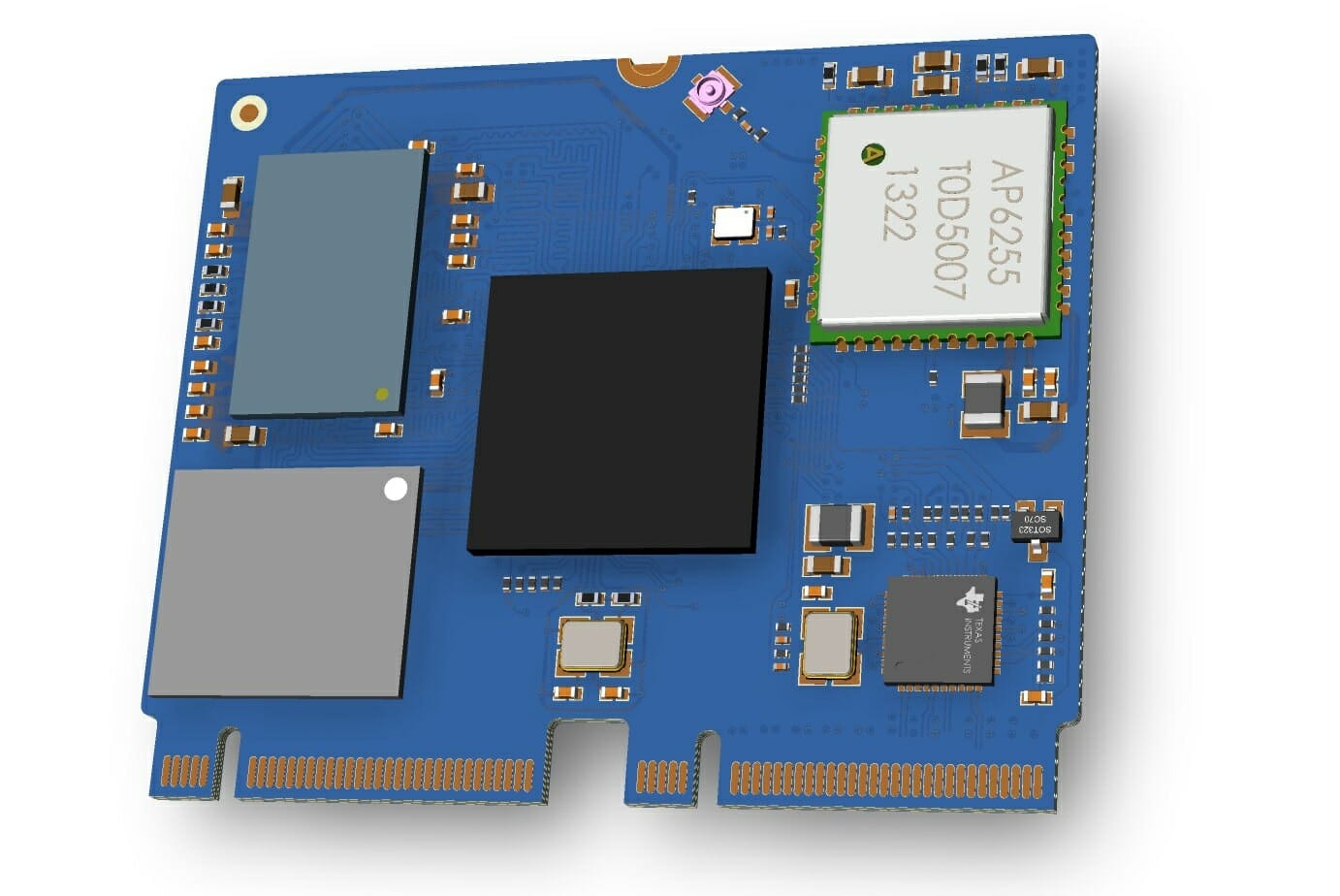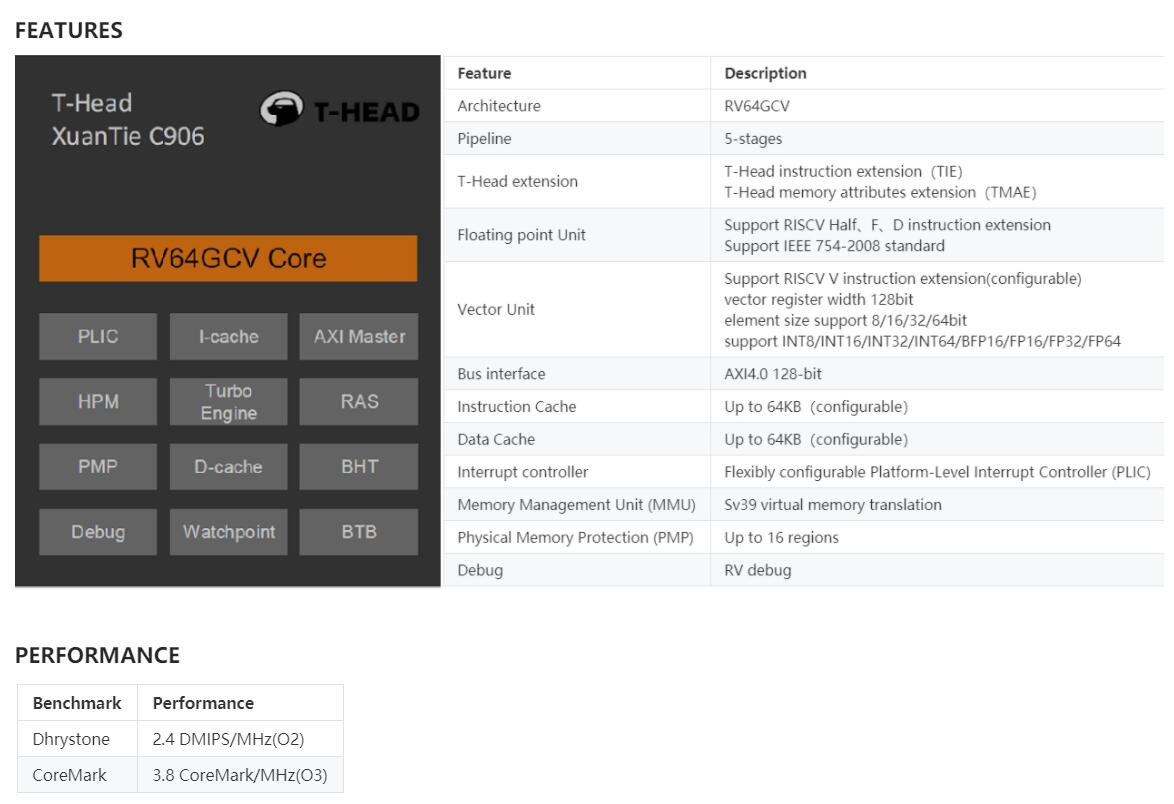Alibaba unveiled Xuantie-910 RISC-V core (aka XT910) in 2019 for powerful SoC with up to 16 cores, but an update in 2020 revealed the company planned to have a complete RISC-V core family for a wide range of application from low-power microcontrollers to server SoCs.
At the time, I just assumed the company planned to keep their cores to themselves, but time proved me wrong as T-Head, the Alibaba subsidiary in charge of developing RISC-V cores, started to cooperate with Allwinner to develop open-source processors, which should lead to low-cost Linux capable RISC-V SBC very soon according to a tweet from Sipeed.
Good News:
We get first chip which based on XuanTie C906 (RV64GCV),
it have abundant interface (HDMI/RGB/DVP/MIPI/GMAC/…),
and will be able to run Debian system.
Last and most important, the basic dev board price is start at 12.5$ (1% of HiFive Unleashed) pic.twitter.com/EJbXTJ5eMb— Sipeed (@SipeedIO) November 6, 2020
As far as I understand companies are still under NDA with Allwinner, so they can divulge too much. But here’s what the $12.5 Sipeed Linux RISC-V board specifications should look like based on public information available at this stage:
- SoC – Unnamed Allwinner single-core XuanTie C906 64-bit RISC-V (RV64GCV) processor @ up to 1 GHz; 22nm manufacturing process
- GPU – 2D accelerator only
(similar to what is found in Allwinner V3s) - VPU – H.265/H.264
- System Memory – 64MB to 256MB DDR3 (built-into processor); external memory version may also be available
- Storage – MicroSD card socket
- Video Output / Display I/F – HDMI, RGB LCD
- Camera I/F – DVP and MIPI CSI
- Networking – GMAC (Gigabit Ethernet MAC), optional WiFi and Bluetooth module
- USB – USB host and OTG
I don’t have renders for the SBC, but the company will also make an Allwinner RISC-V system-on-module for other projects.

Allwinner RISC-V processor will run the Debian Linux operating system, and the $12.5 price tag for Sipeed SBC makes it the cheapest RISC-V Linux board with MMU by far. You can already run Linux on RISC-V using Kendryte K210 boards, but those are not really practical due to the lack of MMU and low-memory, or on HiFive Unmatched offered for $665 and allows you to build a complete RISC-V PC.
The upcoming Allwinner powered RISC-V board from Sipeed does not come with a 3D GPU, and memory is limited so based on the information currently available, it may end being comparable to a Raspberry Pi Model A+ minus the ability to run any application relying on 3D graphics.
There’s still a lot of work to bring RISC-V ecosystem to the level of Arm, but it’s clearly a step in the right direction. Sipeed says the board will be available in one or two months, so let’s make that Q1 2021 to take into account potential delays.

Jean-Luc started CNX Software in 2010 as a part-time endeavor, before quitting his job as a software engineering manager, and starting to write daily news, and reviews full time later in 2011.
Support CNX Software! Donate via cryptocurrencies, become a Patron on Patreon, or purchase goods on Amazon or Aliexpress





